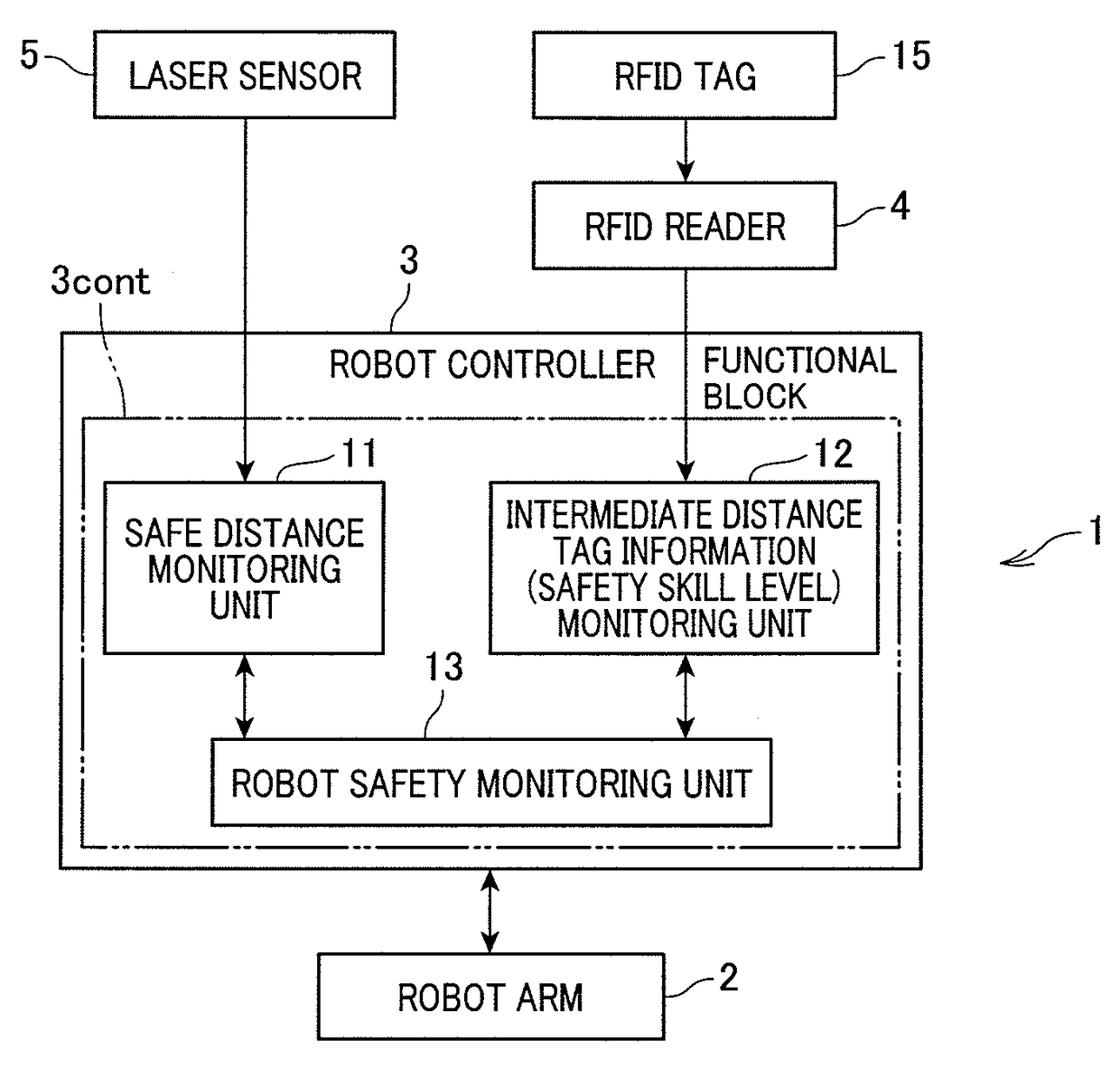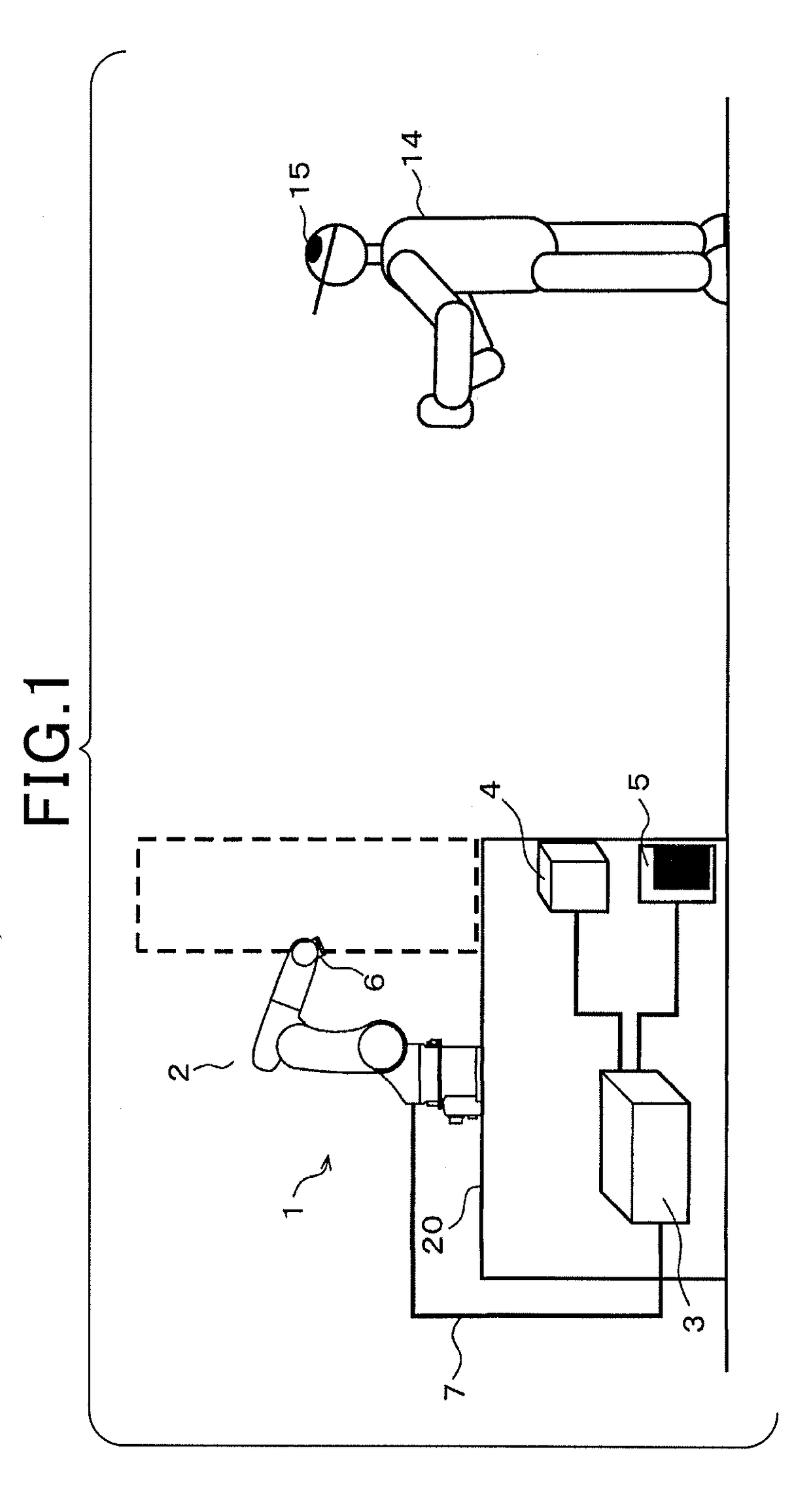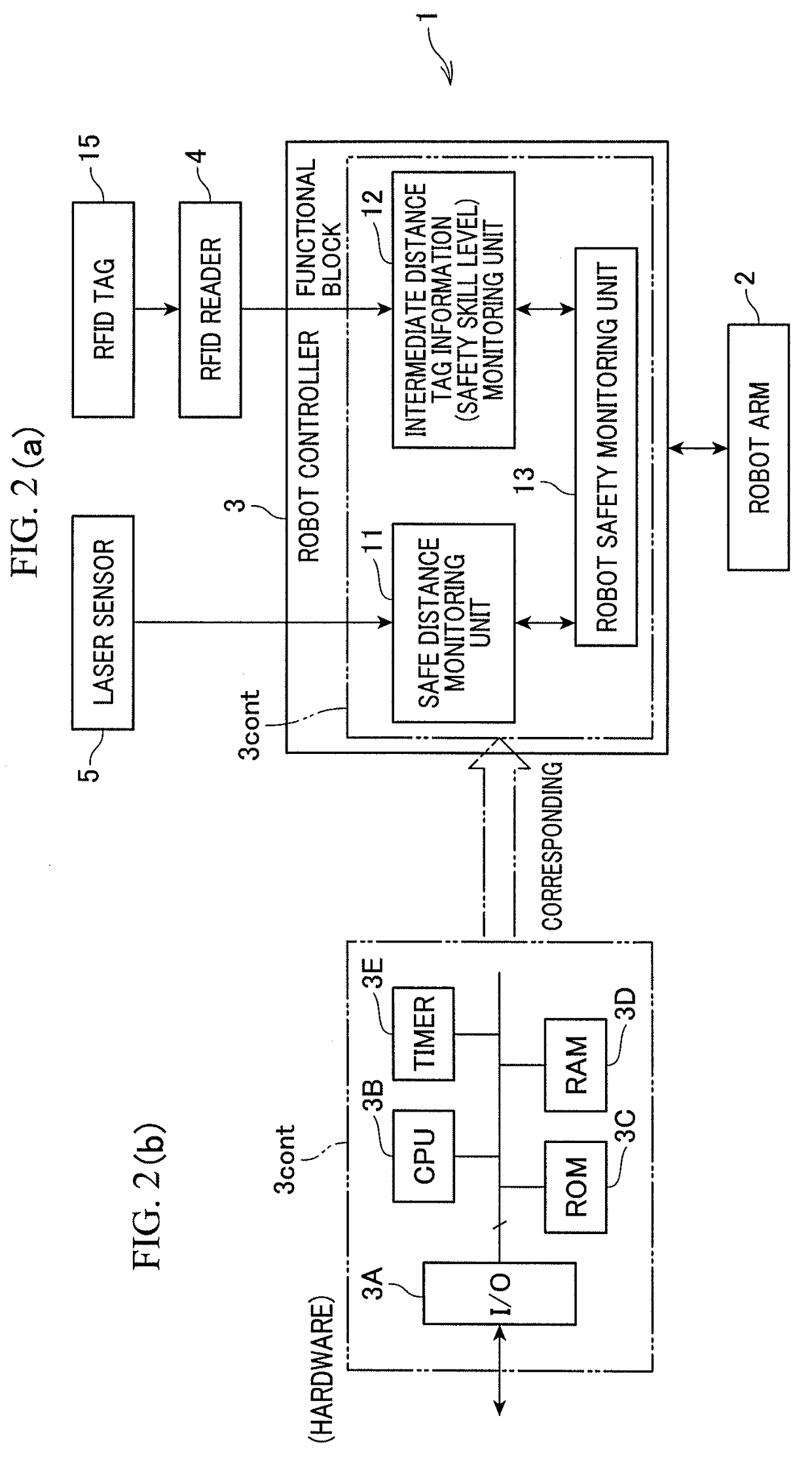Method and system for controlling robot
a robot and arm technology, applied in the field of method and system for controlling a robot, can solve the problems of reducing the speed of the robot arm's operation, and reducing the work efficiency of the control device, so as to ensure safety, improve work efficiency, and ensure the effect of processing efficiency
- Summary
- Abstract
- Description
- Claims
- Application Information
AI Technical Summary
Benefits of technology
Problems solved by technology
Method used
Image
Examples
first embodiment
[0034]Hereinafter, a first embodiment will be described with reference to FIGS. 1 to 8.
[0035]FIG. 1 is a view schematically showing the external appearance of a robot control system (apparatus) 1 according to this embodiment. The system 1 is an industrial robot. For example, the system 1 includes a robot arm 2 for assembly, a robot controller 3 for controlling the robot arm 2, and an RFID reader 4 and a laser sensor 5 connected to the robot controller 3.
[0036]The robot arm 2, which is a robot main body, is configured as, for example, a 6-axis vertical multi-joint robot. The robot arm 2 is installed on a working stand 20. A detailed description of the general construction of the robot arm 2 will be omitted. The robot arm 2 has six-axis arms, each of which is driven by a servo motor. A hand 6 for holding, for example, a workpiece received in a pallet is provided at the tip of the sixth axis arm. The robot arm 2 is connected to the robot controller 3 via a connection cable 7. The respe...
second embodiment
[0067]The parts of the second embodiment identical to those of the first embodiment are denoted by the same reference symbols, and a description thereof will be omitted. Hereinafter, the parts of the second embodiment different from those of the first embodiment will be described.
[0068]In the second embodiment, as shown in FIG. 9, the movable region of the robot arm 2 is divided into, for example, four regions. The robot arm 2 is operated according to a control program, but the robot safety monitoring unit 13 of the robot controller 3 sets a region that the robot arm 2 is to enter within a predetermined time, for example about 1 second, from a control period at each time as a “monitoring region.” In addition, the robot safety monitoring unit 13 of the robot controller 3 sets a region that the robot arm 2 is not to enter within the predetermined time as a “unmonitored region.”
[0069]As shown in FIG. 10, when the determination result at step S1 is “NO,” the above setting is performed a...
third embodiment
[0071]In the third embodiment, as shown in FIG. 11, step S11 is performed before step S1. Subsequently, at step S12, a person 14 who is present within the range of the short distance in only the “monitoring region” is detected. In the case in which a person 14 is detected within the range of the short distance in the unmonitored region, therefore, the determination result at step S1 is “NO,” and the procedure advances to step S2. Furthermore, the process at step S2 is the same as that of the second embodiment. That is, if the person is present in the unmonitored region, the robot arm 2 does not enter the unmonitored region within a predetermined time even when the person is present within the range of the short distance. Even in this case, therefore, the process is performed in the same manner as the process in the intermediate distance according to the second embodiment.
[0072]According to the third embodiment as described above, the robot controller 3 operates the robot arm 2 at a ...
PUM
 Login to View More
Login to View More Abstract
Description
Claims
Application Information
 Login to View More
Login to View More - R&D
- Intellectual Property
- Life Sciences
- Materials
- Tech Scout
- Unparalleled Data Quality
- Higher Quality Content
- 60% Fewer Hallucinations
Browse by: Latest US Patents, China's latest patents, Technical Efficacy Thesaurus, Application Domain, Technology Topic, Popular Technical Reports.
© 2025 PatSnap. All rights reserved.Legal|Privacy policy|Modern Slavery Act Transparency Statement|Sitemap|About US| Contact US: help@patsnap.com



